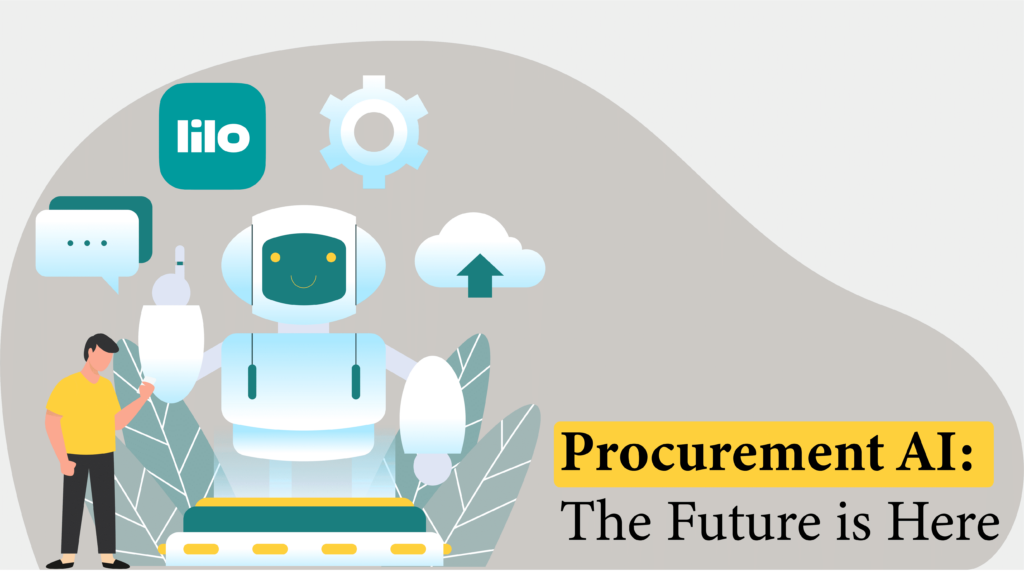Procurement departments across industries are constantly stretched thin with growing demand for cost reduction, supply chain risk mitigation, and operational efficiency. So, many enterprises have recently been piloting digital supply networks, integrated end-to-end cloud procurement solutions, and robotic process automation.
Most organizations that adopted source-to-settle (S2S) technologies early on to integrate purchasing with the accounts payable department succeeded in structuring large volumes of data used in procurement processes. However, they struggled to fully utilize this data to streamline their procurement processes end-to-end.
Recent advances in Large Language Models (LLMs) and the possibility of developing vertical AI—tailored to procurement processes in specific industries—have presented new opportunities to build solutions that can drive value, reduce risks, and lead to more savings.
AI is Transitioning from Hype to Real-World Applications
AI is moving past the hype to become a real-world tool with practical business applications across multiple domains, and procurement departments are no exception.
Having waded through a period of economic uncertainty and global supply chain turmoil, various industries are now open to using AI in procurement. Organizations want to see how AI can change the way they forecast demand, identify and manage suppliers from different locations, negotiate supplier agreements, process payments, and automate processes.
As a procurement AI provider in the hospitality sector, this is something we at Lilo have experienced firsthand. Our end-to-end procurement solution uses vertical AI to help hotels:
- Forecast demand
- Optimize inventory
- Find the best supplies at the lowest possible prices
- Automate PO (purchase order) processing
- Centralize your procurement experience in one place: one login to all vendors
- Reduce time and effort involved in hotel supply purchases
- Benchmark supplier performance
Procurement AI Use Case Example
Global retail behemoth Walmart has begun using “Pactum,” an AI bot designed to autonomously negotiate non-strategic supplier contracts at scale.
For large organizations like Walmart that deal with thousands of suppliers, focused negotiations with each one of them were impractical.
So, these companies often relied on standardized, non-negotiated cost-and-purchase terms for up to 20% of their suppliers.
With an AI bot handling negotiations and closing deals with 68% of the suppliers it engaged, Walmart was able to realize savings of 3%, according to a recent Harvard Business Review report.
Bloomberg recently reported that while the use of the AI bot in procurement helped Walmart unlock savings, 75% of suppliers preferred negotiating with AI instead of a human. This indicates that the procurement ecosystem is keen to embrace this technological disruption.
Predictive Procurement with AI
AI models trained on large datasets can factor in not just historical demand patterns but also external signals such as geopolitical events, weather, supply chain volatility, and more for precise demand forecasting.
Unlike static estimates, which are often limited by the volume of available data and the ability to process it, procurement AI can scrape everything from financial transactions and shipping data to news reports, public records, and shifting consumer demand. This enables organizations not only to secure better deals but also to prepare for potential risks early on.
Smarter Procurement with AI
While generic LLMs can help us write emails, draft proposals, or create images, once trained on specialized data, they can analyze and synthesize information in ways that were previously unimaginable.
Procurement AI may include features such as:
- Scanning and interpreting supplier contracts to identify opportunities to cut costs (Docusign Insights, for instance, can interpret legal documents with ease).
- Crawling and analyzing public records and other available data sources to manage supplier risks (RiskIntelligence, for example, provides alerts about supply chain risks).
- Reviewing, approving, and automating purchase orders (Lilo, for example, helps hotels save up to 80% of the time spent on reordering).
- Automating accounts payable processes (Stampli, for example, uses ML algorithms to flag payment fraud and streamline payment workflows).
Final Words
While many of the examples cited above are standalone applications that use AI to drive value in just one area or offer broad choices across different industries, we believe that vertically focused, end-to-end procurement AI solutions like Lilo can unlock far greater value. These solutions provide visibility and streamline procurement processes in ways that were considered impossible just a few years ago. So, yes, it is TIME to build for procurement AI.


